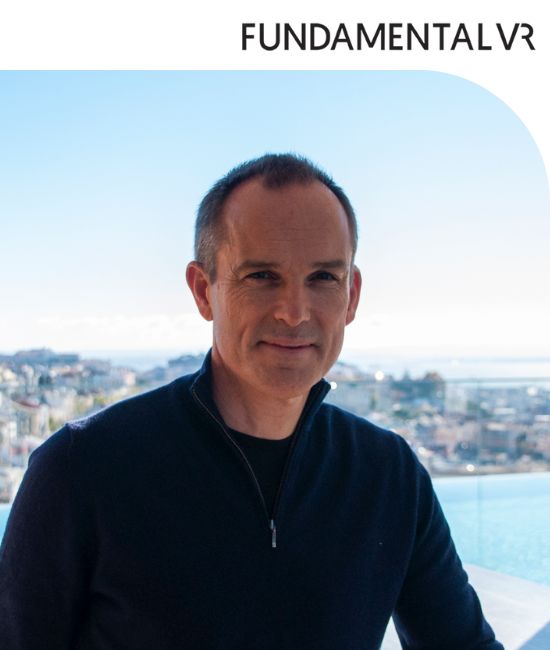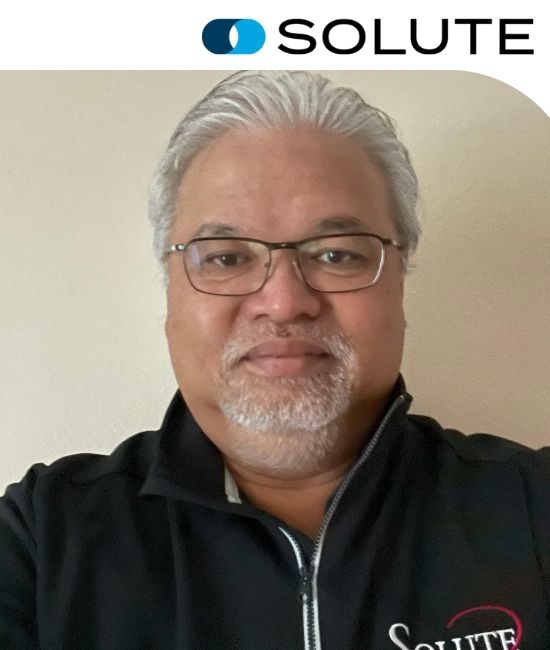02:05 PM - 02:30 PM
Description
Advances in kinesthetic haptics and 3D spatial technology with high-fidelity graphics are putting the final nail in the cadaver coffin and rendering risky human surgical training obsolete. What was once science fiction is now science fact. Immersive technology brings a sensory realism so acute that solutions are now a credible alternative to traditional medical education methods. This session with Richard Vincent and Dr. Rafael Grossman will look at how immersive technologies have accelerated VR capabilities to build "pre-human" competencies that allow medical professionals to acquire and hone skills before they encounter patients. It will look at the technology making this possible and how pre-human competencies enhance patient outcomes through increased safety and precision while reducing costs.
Speakers


Related Sessions
09:00 AM - 09:25 AM
Description
The ability of field medics and field surgeons to be able to get immediate consultation from an expert surgeon may be the critical difference in the survival and more positive longer-term recovery of a wounded warfighter. Being able to do this in an Augmented-to-Virtual Reality space would set this collaboration experience to an even higher level. This 3D collaborative space would provide a spatial calibration of the physical and virtual realities to allow the Novice surgeon to work on the physical body within an augmented reality alongside an Expert surgeon’s avatar with a virtual reproduction of the patient’s injury in his virtual reality.
The Virtual Augmented Distributed Engagement Reality (VADER) is an AR-VR Remote Telementoring/Telemedicine application that was implemented by SOLUTE for a medical organization in San Diego and is part of their operations center showcase offerings highlighting the latest leading-edge medical technologies.
Speakers


09:30 AM - 09:55 AM
Description
18Loop and the American Childhood Cancer Organization (ACCO) have conducted a Joint Experimental Intervention Research Study (JEIRS) to measure the efficacy of VR on children with pediatric cancer. This session will report on the findings and recommendations as well as a presentation on the benefits of Virtual Stress Management, the gamification of meditation and collaboration to the larger issues of mood and pain management.
VR is truly a family intervention and data suggests that the experience strengthens family bonds (especially when related to families coping with illness). Attendees will learn three types of VR approaches in pediatric oncology, what our results look like and what the industry needs to do moving forward regarding standards and hardware to support the Virtual Pharmacy.
Speakers


10:00 AM - 10:55 AM
Description
NASA developed a series of XR medical scenarios for astronaut training during deep space exploration missions. Led by Dr. Roger Dias, MD, PhD, MBA at the Brigham and Women’s Hospital (BWH) and Harvard Medical School, and funded by the Translational Research Institute for Space Health (TRISH), this project has a rather lengthy title “Mixed Reality (MR) Care-delivery Guidance System to Support Medical Event Management on Long Duration Exploration Missions” but is a very noble and important mission. The development of these XR, highly realistic, medical scenarios for in-flight space training was carried out by a collaboration between the BWH, Radiant Images, Inc., and Panogramma Inc. The photogrammetry and volumetric video capture, editing, and processing were performed with several other collaborators, including Metastage, Sony, and Arcturus. This session will cover the challenges and solutions this team faced and solved in the production of these medical training modules.
Speakers





11:10 AM - 11:35 AM
Description
At its best technology can be a powerful force for good in the world.
New cutting edge computer vision and code scanning techniques are helping CPG brands reimagine their packaging and product offering to help the visually impaired locate and access product information through their phone both in-store and at home.
Increasingly brands and businesses are looking to embrace the accessibility and inclusivity agenda for all their customers: providing access to relevant and augmented information for their total customer base, whether they are sighted or blind and partially sighted.
The trick is to deliver this in a way that can work operationally through the design, production and manufacturing chain whilst offering a simple and single scanning solution for all end users. Discover a new approach to solve this problem.
Speakers

11:40 AM - 12:05 PM
Description
The University of Pennsylvania Cancer Center is one of the largest and most technologically advanced centers of its kind in the world. While this esteemed institution is well-known for its work in the areas of immunotherapy, precision surgery, and proton therapy it is quickly gaining a reputation for work being done in the field of medical virtual reality. This technology is now being utilized to help manage the stress and anxiety experienced by patients and caregivers alike. It is quickly finding a place in the areas of patient education, as well as the education the medical trainees. Researchers and clinicians at PENN continue to explore and develop XR applications for the benefit of patients, medical trainees, and caregivers.
Speakers
